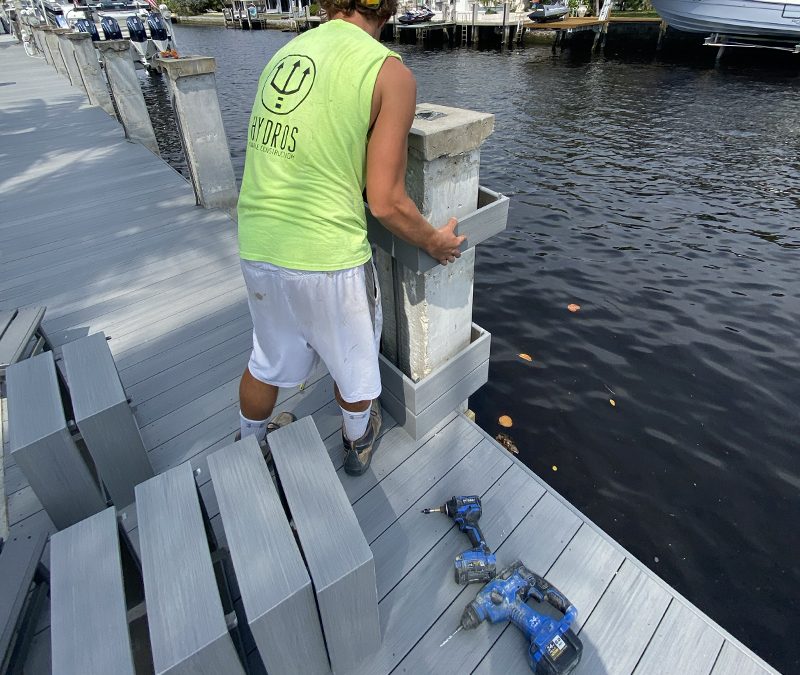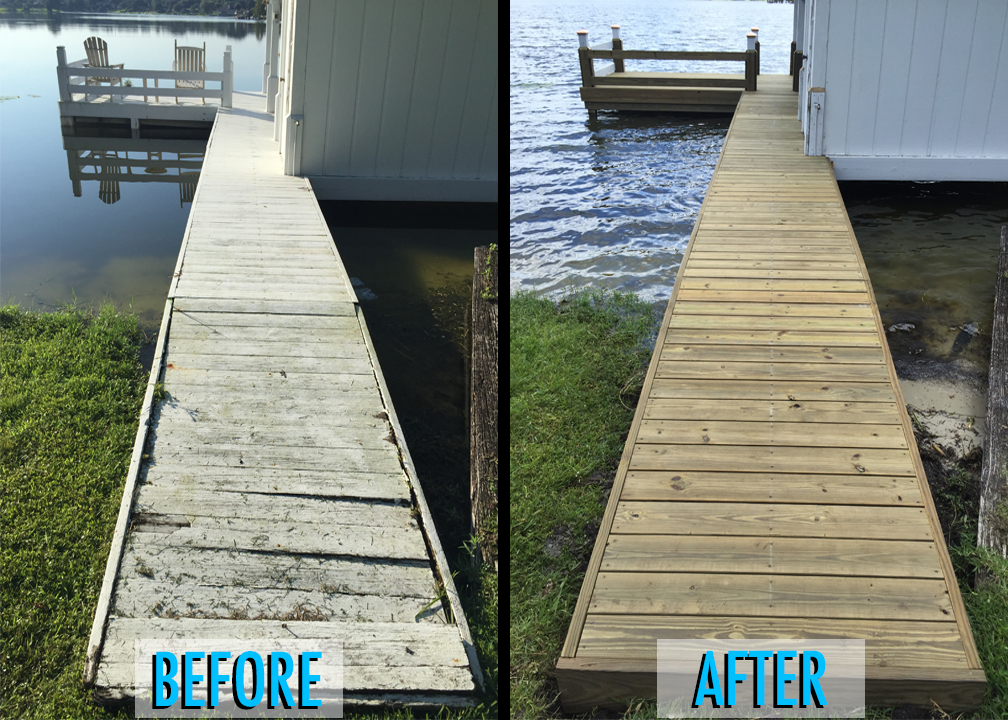Just How to Address Common Dock Repair Work Issues for Safe Water Activities

Identifying Common Dock Issues
Determining common dock problems is crucial for maintaining the performance and security of your beachfront residential or commercial property. Regular assessments can assist reveal problems before they come to be severe, making certain both the longevity of the dock and the security of those who use it. One prevalent issue is loose or corroded bolts. In time, screws, screws, and other fasteners can come to be loose due to constant direct exposure to water and weather elements, causing structural instability.
One more typical trouble is the destruction of flotation tools. These gadgets are important for maintaining the dock resilient, and any damage or leaks can trigger the dock to checklist or sink. Regularly examining for leaks or water logged floats can preempt a lot more substantial concerns.
In addition, algae and barnacle build-up on the dock's surface can create unsafe and unsafe conditions. This biofouling not just positions a risk to individuals but can additionally speed up the wear and tear of the dock products.
Lastly, inspecting for signs of corrosion on steel elements is crucial. Corrosion can jeopardize the honesty of the dock's structure, making it risky. By regularly recognizing these common dock issues, you can ensure that your dock continues to be secure and functional for several years to find.
Repairing Rotting Timber
When addressing the problem of rotting timber on your dock, it is vital to act quickly to avoid further deterioration. Begin by thoroughly evaluating the whole structure to identify all impacted areas. Make use of a screwdriver to probe the timber; if it sinks in easily, the timber is most likely rotted and needs prompt interest.
As soon as identified, get rid of the deteriorated areas using a saw or carve. Be sure to reduce back to healthy and balanced, solid wood, ensuring you eliminate all endangered product. After elimination, deal with the staying wood with a wood chemical to stop future rot. This therapy will aid protect versus wetness, which is the main source of wood decay.
Next, change the removed sections with marine-grade lumber or pressure-treated timber, which are extra resistant to water damage. Safeguard the new items with galvanized or stainless-steel bolts to protect against deterioration. In addition, using a waterproof sealant to the brand-new timber can give an added layer of protection.
Safeguarding Loose Boards
How do you ensure your dock stays practical and safe for all its customers? One crucial element is protecting loosened boards, which can or else position substantial dangers. Loose boards not only increase the risk of tripping but can also endanger the architectural integrity of the whole dock.

For reinstallation, make use of galvanized or stainless steel screws, as these products use exceptional resistance to corrosion in aquatic settings. Make sure the screws are long sufficient to permeate deep right into the underlying assistance structure, but not as long that they stick out through the dock's surface. Pre-drilling pilot holes can help stop the timber from splitting.
Last but not least, keep a normal evaluation timetable to determine and address any type of new problems without delay. By safeguarding loose boards properly, you add to the total safety and security and long life of your dock, making it a reliable system for water tasks.
Supporting Unstable Pilings
Ensuring the stability of unstable pilings is vital to maintaining a useful and secure dock. Unstable pilings can endanger the entire structure, posturing significant threats to users and potentially causing expensive repairs. The very first step in maintaining visit this site right here these vital parts is a thorough assessment. Check out the pilings for indications of rot, damage, or shifting. Make use of a level to inspect for upright placement and ensure they are driven deep enough into the substratum to provide ample assistance.
If the pilings are found to be unstable, one reliable method for support is using extra supporting. Cross-bracing with dealt with lumber or galvanized metal can substantially boost security. Support the dental braces firmly to both the pilings and the dock frame to distribute tons uniformly.

Regular upkeep and regular review of the pilings' security are essential to making sure lasting dock safety and capability.
Changing Rusty Equipment
Dealing with unstable pilings is simply one aspect of maintaining a dock's integrity; one more important concern is changing rustic hardware. Gradually, exposure to wetness and salt can lead to the oxidation and rust of brackets, screws, and bolts, compromising the entire framework's safety and security. Routine evaluation for rust is necessary, particularly after extreme weather or seasonal modifications.
When rusty equipment is recognized, instant activity is needed. Begin by selecting marine-grade stainless steel or galvanized equipment, both made to resist the extreme aquatic setting. Make sure that you have the suitable devices, such as wrenches and screwdrivers, to securely remove the old, corroded pieces without creating additional damage to the dock.
After eliminating the rustic hardware, completely tidy the affected areas to get rid of any type of residual rust or particles. Apply a rust-inhibiting primer to subjected metal surfaces before installing the brand-new hardware. Tighten up all components securely to avoid future helping to loosen, and occasionally inspect the installations to make certain continuous security.
Replacing corroded hardware not only prolongs the dock's life-span but also substantially improves the safety and security of water tasks. By proactively taking care of rust, you secure both the structure and its users, making sure a pleasurable and safe and secure waterside experience.
Verdict
Regular assessments and upkeep are vital to attend to common dock repair service problems and make certain safe water activities. By determining and remedying troubles such as decomposing wood, loosened boards, link unstable pilings, and rustic equipment, architectural stability and durability can be significantly improved. The application of proper therapies and marine-grade products even more fortifies the dock against environmental stress factors. Such positive measures add to the overall security and functionality of dock structures, promoting a safe atmosphere for water-based activities.
Making sure the safety of water tasks hinges significantly on the proper maintenance and repair service of docks (Dock Repairs). These tools are important for keeping the dock buoyant, and any type of damages or slits can cause the dock to listing or sink. By try this web-site consistently determining these usual dock concerns, you can make sure that your dock remains safe and functional for years to come
Making sure the security of unsteady pilings is extremely important to preserving a useful and risk-free dock.Regular evaluations and upkeep are necessary to resolve common dock fixing issues and make certain safe water activities.